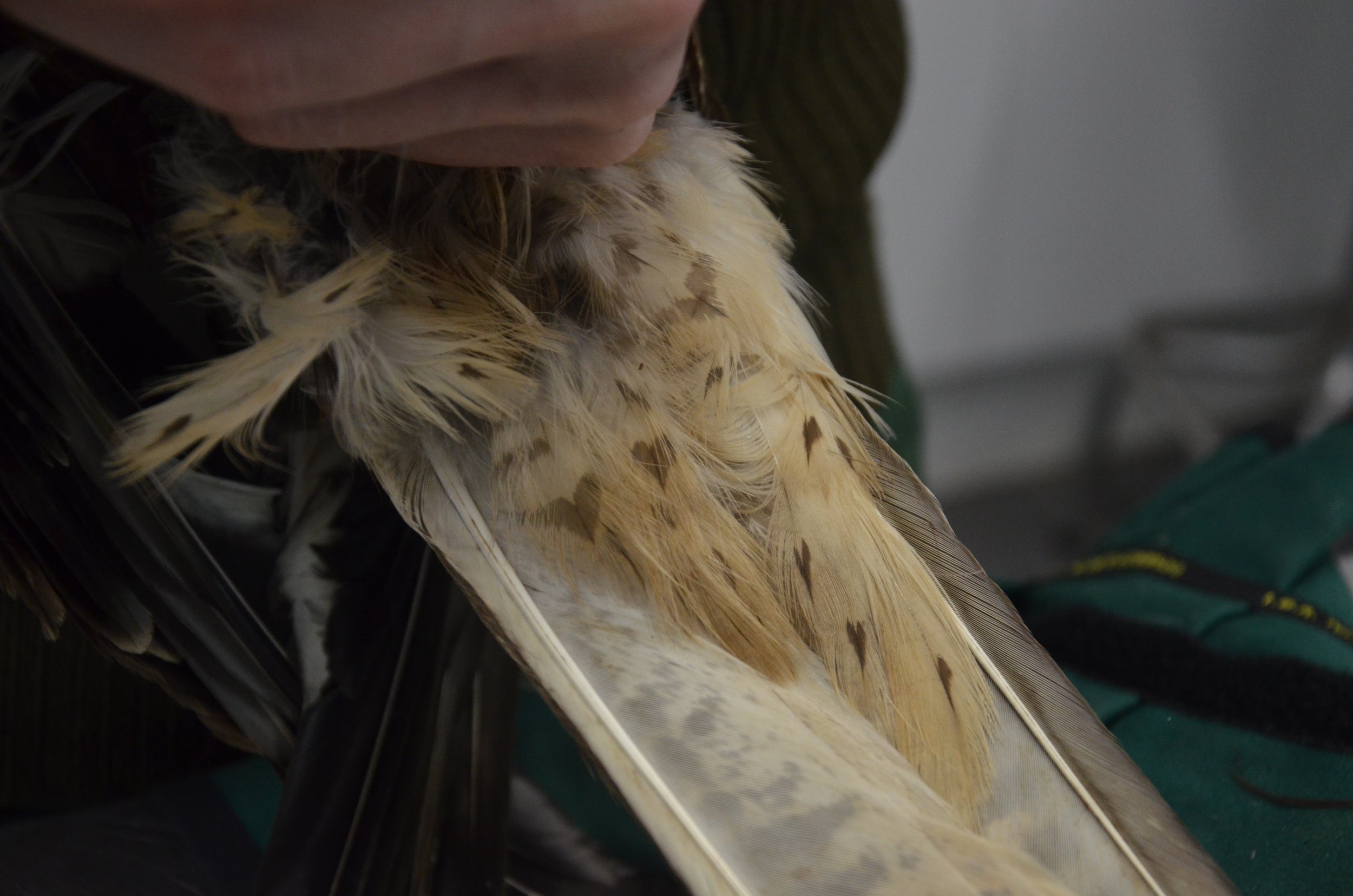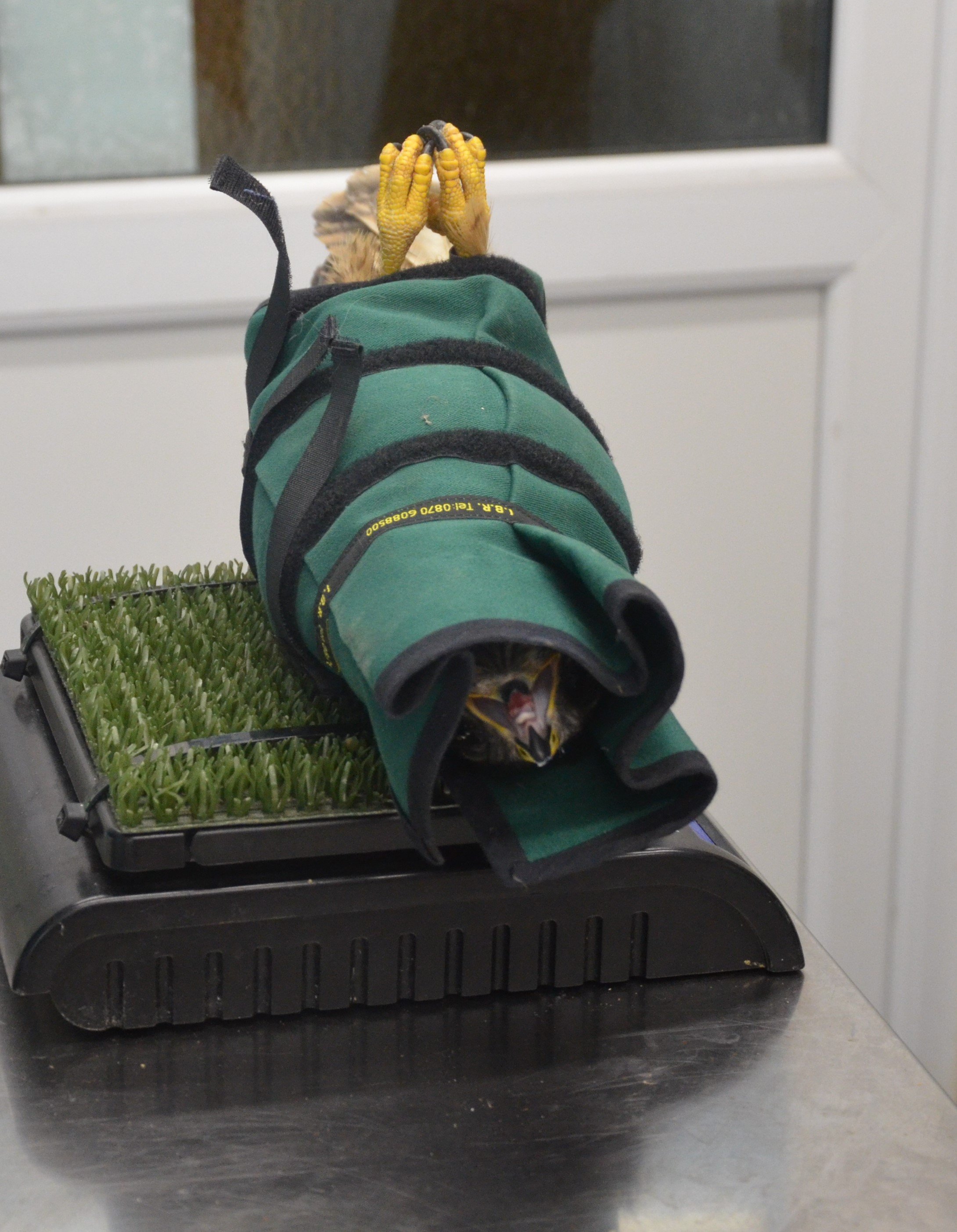Readers will have seen that we’ve recently had four Buzzards admitted to our Raptor Hospital. As they were all improving and set for release imminently, we invited Dr Hugh Hanmer from the British Trust for Ornithology to come and ring them under licence.
Ringing birds is the process whereby a small metal ring with a unique alpha-numeric code is attached to the birds leg. This is the equivalent to us wearing a bracelet or watch, so does not impact on the day to day lives of the birds once released. Should a bird be found with a ring (caught by another ringer, or found injured or dead), the finder can report it to the relevant scheme (in the UK, run by the British Trust for Ornithology) and find out more details about where the bird has come from, how old it is and any changes it its condition.
Not many Buzzards are ringed as part of the scheme, due to their large size and ability to escape most normal catching methods, so to be able to ring four on the same day gave us the chance to have a closer look and compare the individuals. We have provisionally sexed them during the ringing process, however there is so much overlap between male and female biometrics, that we won’t be entering this when we submit the ringing data. The only way to know for certain is during the breeding season, as females will develop a brood patch to help incubate the eggs.
The first Buzzard to be ringed was found starving but had been supplementary fed before being brought to us. From the size of her feet, we had a good guess she was a female. Biometric measurements taken as part of the ringing process showed that although her wing was a little short, her hind claw was at the top end of a female measurement. Checking her moult patterns, she turned out to be a third year bird (hatched in 2020), which was clearly shown by the new and old flight feathers.


The second Buzzard to be ringed was the young emaciated bird that we weren’t sure would survive. This bird was much smaller than the first and the measurements suggested he was a male. His wing feathers showed he was a second year bird (hatched 2021) but was probably the “runt” of the clutch, as there were stress lines in most of his flight feathers, showing a lack of nutrition while they were growing. He also had a juvenile tail with continuous barring to the tip, pale fringes on his wing feathers and the lovely heart shapes on his undertail feathers. This youngster still has a lot to learn but we are hopefully that with a soft release from a local hack site, he will make it.




The third Buzzard to be ringed was the one seen falling from a roof rack. This individual was very pale, and we joked that he may have been stuck in the roof rack all the way from Cornwall, where pale morphs are more common. Unfortunately, he didn’t already have a ring to tell us these details, so he was given a ring in the hope that if he finds his way “home” he may be found and we’ll have a better idea of where he may have come from. This bird was also aged as a second year male, and had a similar tail pattern and pale fringing as the previous Buzzard.



The fourth Buzzard to be ringed was the darker one which came in starving due to an infection. We had already put her down as a female, due to her size, and knew she was an adult because of her behaviour - she would posture and hold her wings out in a threat display whenever she saw us, even when delivering food. This is good, as it shows that they are not habituated with humans and means that they are more likely to avoid humans when released. After being given a ring, we confirmed that she was a third year bird, although she had a different moult pattern to the first.






The two adult Buzzards will be released over the next week or so near where they were found. The two youngsters are awaiting construction of their release pens but they will also be released in the near future. In the meantime, they are getting a free stay in our Hospital with plenty of food and space in the aviaries to start building up muscle condition in preparation for their release back to the wild.
